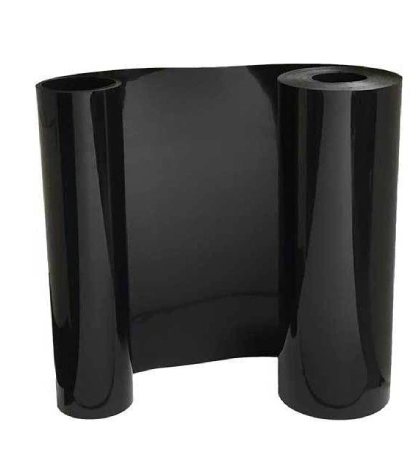Geomembrane sheets are the unsung heroes of environmental protection, offering critical solutions for containment, waterproofing, and environmental preservation. These versatile sheets, typically made from synthetic materials, serve as impermeable barriers in a wide range of applications. In this blog post, we will explore the significance and diverse applications of geomembrane sheets, which play a crucial role in safeguarding our planet and ensuring a sustainable future.
Defining Geomembrane Sheets
Geomembrane sheets are manufactured from various synthetic materials, including high-density polyethylene (HDPE), low-density polyethylene (LDPE), polyvinyl chloride (PVC), and ethylene propylene diene terpolymer (EPDM). They are designed to be impermeable, resistant to environmental factors, and long-lasting, making them ideal for applications that require containment and protection against seepage or leakage.
Environmental Protection in Landfills
One of the most critical applications of geomembrane sheets is in landfill construction. Landfills are designed to safely contain and manage waste materials, preventing them from contaminating the surrounding environment. Geomembrane liners, when installed as part of a composite liner system, serve as a barrier to prevent leachate (liquid waste) from escaping into the soil and groundwater. This not only protects the environment but also safeguards public health.
Wastewater Treatment Ponds
Geomembrane sheets are employed in the construction of wastewater treatment ponds, where they act as liners to contain and treat wastewater. These ponds are essential for the treatment of industrial effluents and municipal sewage. Geomembrane liners prevent the release of harmful pollutants into the environment, ensuring that water treatment processes are effective and environmentally friendly.
Agriculture and Aquaculture
In agriculture, geomembrane sheets are used for various applications:
Irrigation Reservoirs: Geomembrane-lined reservoirs store water for agricultural irrigation, ensuring a reliable and sustainable water source for crops.
Aquaculture Ponds: Aquaculture facilities use geomembrane liners in pond construction to create controlled environments for fish and shrimp farming. The liners prevent water seepage and maintain water quality.
Hazardous Material Containment
Industries that handle hazardous materials, such as chemical plants, rely on geomembrane sheets to line containment areas. These liners are designed to withstand exposure to corrosive and toxic substances, preventing leaks and soil contamination.
Oil and Gas Industry
In the oil and gas sector, geomembrane sheets are used in secondary containment systems to prevent oil and chemical spills. These liners are crucial for maintaining environmental compliance and protecting sensitive ecosystems near drilling and production sites.
Canal and Reservoir Lining
Geomembrane liners are used to line canals and reservoirs in water management projects. They prevent seepage and water loss, ensuring efficient water storage and distribution for agriculture, municipal use, and industrial processes.
Stormwater Management
Stormwater ponds and detention basins often utilize geomembrane liners to control and manage stormwater runoff. These liners prevent the infiltration of pollutants into the ground, maintaining water quality and mitigating the risk of flooding.
Road Construction and Infrastructure
Geomembrane sheets are incorporated into road and infrastructure projects to improve the durability and longevity of structures. They are used in applications such as bridge abutments, tunnels, and retaining walls to provide waterproofing and protection against water ingress.
Green Roof Systems
Geomembrane liners are a key component in green roof systems. They act as a waterproofing layer, preventing water from infiltrating the building structure and supporting the growth of vegetation on the roof. Green roofs offer energy savings, reduce urban heat islands, and improve air quality.
Erosion Control
In civil engineering and environmental projects, controlling soil erosion is crucial to prevent the loss of topsoil and protect natural habitats. Geomembrane sheets can be used in erosion control systems, such as embankment liners and channel linings. These applications help stabilize soil, reduce the impact of water runoff, and prevent soil erosion, ensuring the long-term integrity of landscapes.
Mining Industry
In mining operations, where the extraction of valuable minerals is associated with the production of waste materials, geomembrane liners are used in tailings management. Tailings ponds are lined with geomembranes to contain and manage the waste materials, reducing environmental impact and protecting surrounding ecosystems.
Groundwater Recharge
In regions facing water scarcity, groundwater recharge systems are essential for replenishing aquifers. Geomembrane-lined recharge basins and spreading grounds are used to capture and store excess rainwater or treated wastewater, allowing it to percolate into the ground and replenish underground water reserves.
Geothermal Energy
Geothermal energy projects harness heat from the Earth’s core for electricity generation. Geomembrane liners are used in the construction of geothermal reservoirs, helping to contain and direct geothermal fluids and steam, ensuring efficient heat extraction and energy production.
Reservoir Rehabilitation
Aging reservoirs and water storage facilities often require rehabilitation to extend their service life. Geomembrane liners can be used to upgrade and modernize existing reservoirs, addressing issues related to seepage, leakage, and water loss, while also enhancing water quality and conservation efforts.
Landscaping and Water Features
Geomembrane sheets are employed in the construction of decorative water features, such as ponds, lakes, and artificial waterfalls in landscaping and recreational areas. These liners create stunning and ecologically balanced water features, adding beauty to public spaces and private gardens.
Waste Containment Facilities
In addition to landfills, geomembrane liners are essential in waste containment facilities, including hazardous waste storage and recycling centers. They prevent leachate and chemicals from contaminating the surrounding environment and ensure the proper management of waste materials.
Environmental Remediation
Contaminated sites, such as brownfields and areas affected by industrial pollution, require remediation efforts. Geomembrane liners are used as part of containment systems to isolate and manage hazardous materials during cleanup operations, protecting the environment and human health.
Coastal and Marine Protection
Coastal and marine environments are vulnerable to erosion and rising sea levels. Geomembrane structures, such as geotubes and revetments, are used for coastal protection and beach nourishment projects to prevent erosion and protect coastlines.
Geosynthetic Clay Liners (GCL)
Geomembrane sheets are often combined with geosynthetic clay liners (GCL) to create composite liners with improved sealing and containment properties. These hybrid liners are used in various applications, including landfill lining and closure, hazardous waste containment, and stormwater management.
Conclusion
Geomembrane sheets are not only a critical tool for environmental protection but also a solution for creating sustainable and efficient infrastructure in various industries. As the world faces increasing environmental challenges, these impermeable barriers continue to serve as a shield against pollution, a safeguard for water resources, and a support for green initiatives. Whether it’s preserving natural ecosystems, ensuring safe waste disposal, or harnessing renewable energy, geomembrane sheets play an essential role in shaping a more sustainable and environmentally conscious future. Their adaptability, durability, and environmental benefits make them indispensable in a wide range of applications.







